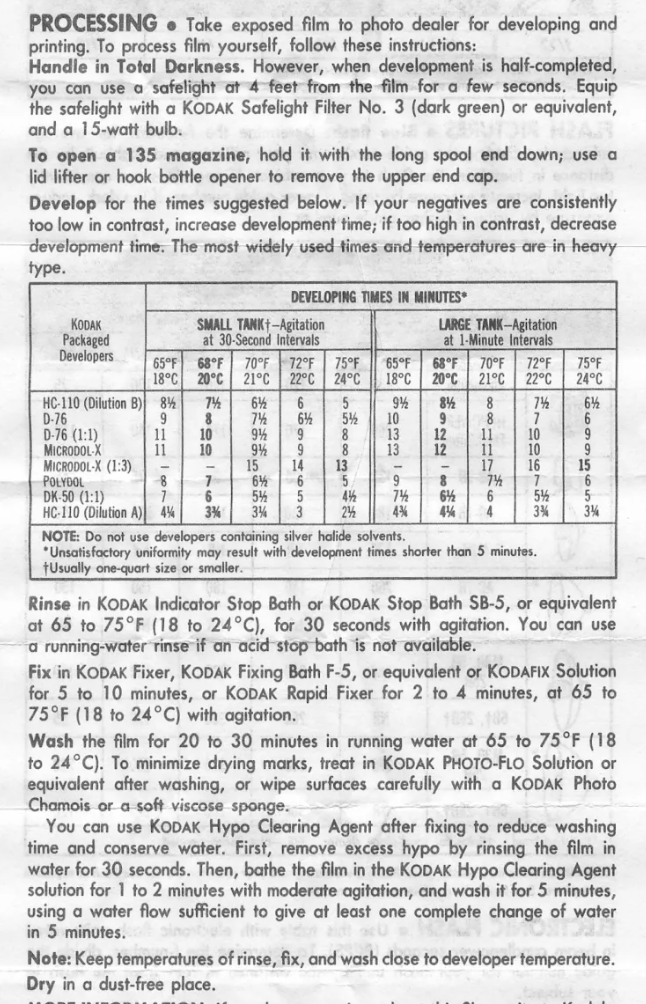Everything I Know I Learned from Kodak
About photography that is. Well, mostly.
I started dabbling in photography in junior high school. That would be 1975 or so. My father loaned me his Kodak Retina IIc 35mm rangefinder camera and I’m pretty sure the first film I ever shot was Kodak’s Plus-X Pan black and white. I would alternate between 125 speed Plus-X and 400 speed Tri-X, guessing exposure based on the little paper instructions that Kodak would pack with every roll. Here’s an example of one of the instruction sheets from a roll of very expired Panatomic-X film I bought on eBay.
I would pretty much follow Kodak’s instructions and if I had the time, I would bracket my exposures, sort of throwing a dart and hoping one of them would be right. It mostly worked.
I learned how to develop film by reading Kodak’s The Joy of Photography that I borrowed from the local public library. It had instructions on how to set up a basic darkroom. Those little instruction sheets also had information on how to develop film. Here’s Kodak’s instructions for developing Tri-X.
Image courtesy Jim Grey’s Down The Road blog
Back in 1975, many department stores had photographic departments that not only stocked cameras and film, but also darkroom equipment, chemicals and paper. I could walk from my junior high school across the playground to the Grand Way department store. Those were also the days that the person behind the counter actually knew a lot about the products they were selling. At my Grand Way, the counter was manned by Charlie. I don’t remember Charlie’s last name, but I remember that he was a professional photographer who earned extra money working at the store.
At Grand Way, with Charlie’s help, I bought a Paterson plastic developing tank, some Kodak D-76 developer, Kodak Indicator Stop Bath and Kodak Fixer. I developed my film in our basement laundry room. My parents hated the smell of stop bath. I couldn't afford an enlarger at first, but a friend’s father gave me a Kodak A-B-C Darkroom Kit that included a contact printing frame, some small 5x7 developing trays, a safelight, some very outdated Kodak Velox paper and other goodies.
Kodak ABC Home Darkroom Outfit. Photo credit: Estate Sales.org
My first prints were contact sheets of my 35mm negatives. I used a bare 60 watt incandescent bulb to expose the print, following, of course, Kodak’s instructions. I developed my contact sheets in Kodak Dektol developer. I can still remember watching the magic of an image come up on that old Kodak paper in the developing tray. That moment hooked me on processing my own film and printing my photographs in the darkroom.
Twenty years later, I would use Kodak’s Building a Home Darkroom as a guide as I put my basic carpentry and plumbing skills to the test building my dream darkroom in my first home.
Kodak’s Darkroom Data Guide was my bible when I worked in the darkroom. I exclusively printed on Kodak’s graded fiber and RC papers and eventually moved on to Kodak’s multi-grade paper using Polycontrast filters.
Obviously, the Kodak end game was to get you to buy everything photographic from them and with me, it worked, but I didn't mind. Kodak manufactured great film, paper and chemicals and they excelled at making the process easy and accessible to everyone.






